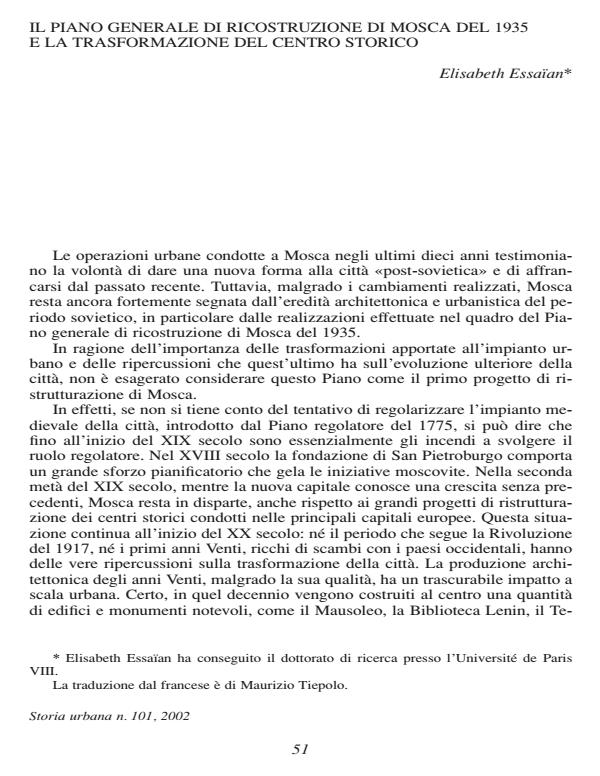Il piano generale di ricostruzione di Mosca del 1935 e la trasformazione del centro storico
Titolo Rivista STORIA URBANA
Autori/Curatori Elisabeth Essaian
Anno di pubblicazione 2003 Fascicolo 2002/101
Lingua Italiano Numero pagine 0 P. Dimensione file 881 KB
DOI
Il DOI è il codice a barre della proprietà intellettuale: per saperne di più
clicca qui
Qui sotto puoi vedere in anteprima la prima pagina di questo articolo.
Se questo articolo ti interessa, lo puoi acquistare (e scaricare in formato pdf) seguendo le facili indicazioni per acquistare il download credit. Acquista Download Credits per scaricare questo Articolo in formato PDF

FrancoAngeli è membro della Publishers International Linking Association, Inc (PILA)associazione indipendente e non profit per facilitare (attraverso i servizi tecnologici implementati da CrossRef.org) l’accesso degli studiosi ai contenuti digitali nelle pubblicazioni professionali e scientifiche
The 1935 General reconstruction plan for Moscow is a significant episode in 20th century urban planning and, in particular, of Stalinist urban development. The Plan, due to the importance of the transformations to the urban layout and impact on further evolution of the city, may be considered as the first true Moscow reconstruction project. Due to the radical nature of the planned and partially actuated interventions, such a project was often compared with that designed by Haussmann in 19th-century Paris. This paper focuses on the «socialist reconstruction» of Gor’kij Street (Tverskaja), one of the main communications axes of the Soviet capital. Through a comparative analysis of various plans from various epochs, it is demonstrated that the actuation of the General reconstruction plan for Moscow was much less destructive of the urban fiber of the city than the plan had originally led people to believe it would be. In this case, existing buildings were implemented by the plan and public space gained the appearance of a successful, functional architectural and urban composition. In fact, even if only 5% of the buildings involved in the alignment or demolition plans were effectively demolished, the rubble was totally salvaged and reused in the construction of new housing.
Elisabeth Essaian, Il piano generale di ricostruzione di Mosca del 1935 e la trasformazione del centro storico in "STORIA URBANA " 101/2002, pp , DOI: